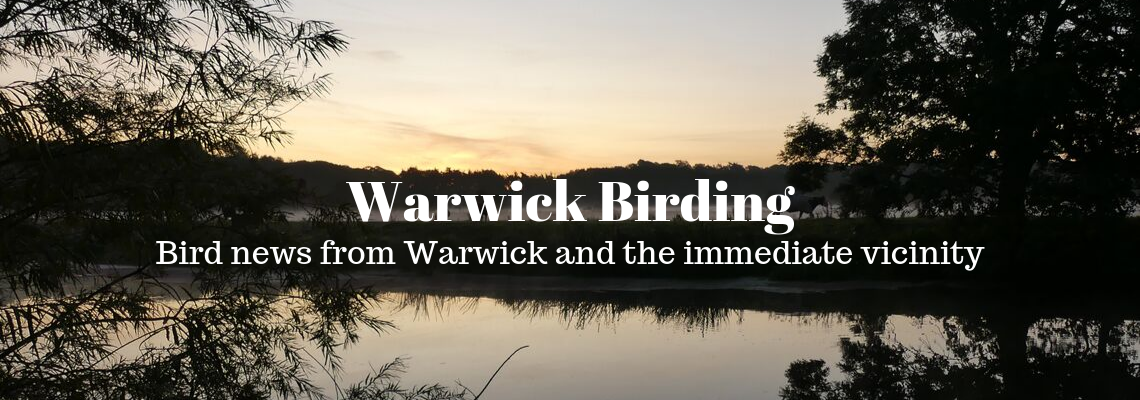One of our team members, Rick, has published a book all about urban birding; diarising a year of the birds and wildlife spotted in our local park. It is a beautifully written book and well worth a read.
A couple of weeks ago, Rick was invited to speak at an event in Warwick town centre - he's quite the celeb! Here is the local write-up on the event...
The Regency ballroom in the Court House – Warwick's Town Hall – echoed to the sound of spring birdsong on April 13th. The occasion was the monthly tea, talk and quiz staged by 'Unlocking Warwick', the Town Council's volunteer group.
Rick Thompson - a member of the Warwick100
Birding group and the Warwick Natural History Society, gave a fascinating talk
about the surprising wildlife to be found in St. Nicholas Park, in the centre
of town, as featured in his book 'Park Life – a year in the wildlife of an
urban park'.
It was a full house in the ballroom as Rick
showed pictures of some of the obvious and easily identified birds that are
regulars in the park, such as the pair of mute swans, heron, the unpopular
magpies and the noisy blue tits and great tits. He described the excitement of springtime,
when more than 20 million birds arrive in Britain, from more arid climes in
Africa and southern Europe, to breed.
All birdwatchers know that identifying small
birds is as much about bird-listening as bird-watching. So, with the aid of the Collins Bird Guide App
and a linked loudspeaker, the audience was able to hear some of the vocal
residents such as the robin and wren, and also migrant warblers, arriving in the
park in mid-April.
The ballroom rang with the sound of the
easily identified chiffchaff, and the slightly more difficult songs of the
blackcap, sedge warbler, whitethroat and Cetti's warbler - all to be heard now at
Kingfisher Pools, near the footbridge in St. Nicholas Park.
Rick reflected on the importance of urban
parks and contact with nature for physical and mental wellbeing. Scientists call this 'exposure to greenspace'. The beneficial effects of regular contact
with the natural world can be measured, and became invaluable to many during
the pandemic restrictions. Rick went on
to say that observing wildlife closely and gaining some knowledge of the
plants, insects and birds, makes his regular walks in the park much more
rewarding - uplifting the spirits even in the darkest of times.
After the talk, Rick signed copies of his
book ‘Park Life’, and the teatime quiz followed. Devised by Helen Fellows, it contained 25
questions about British wildlife…do you know what a male and female badger are
called? Or the name of an otter’s home?
We are very proud of our Rick and look forward to more books and talks from him in the future.




.jpg)